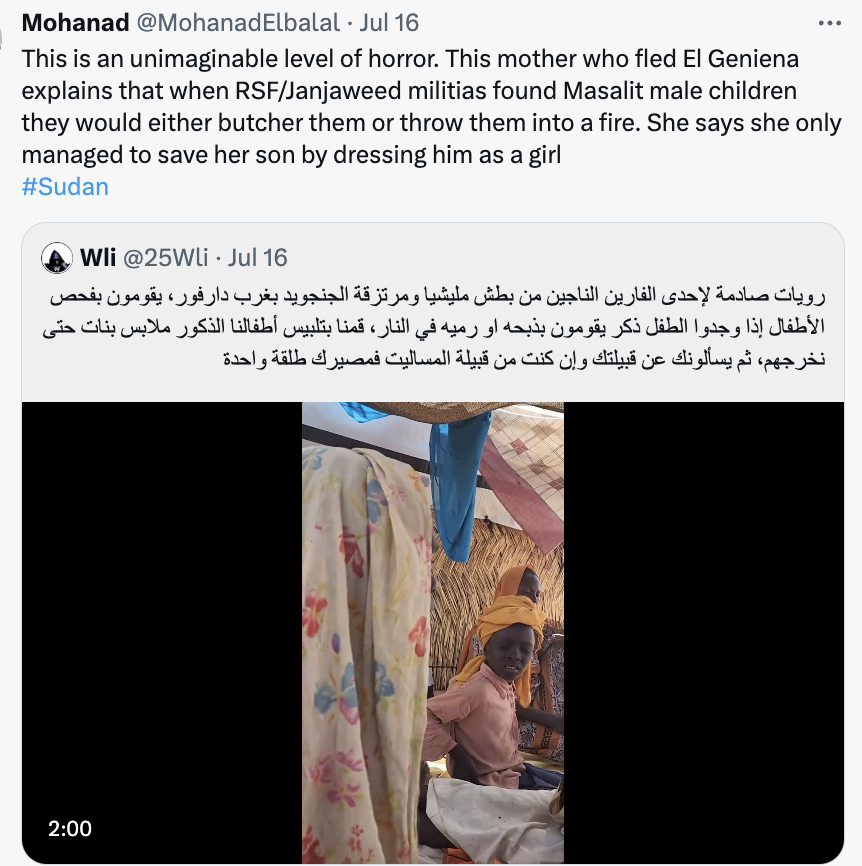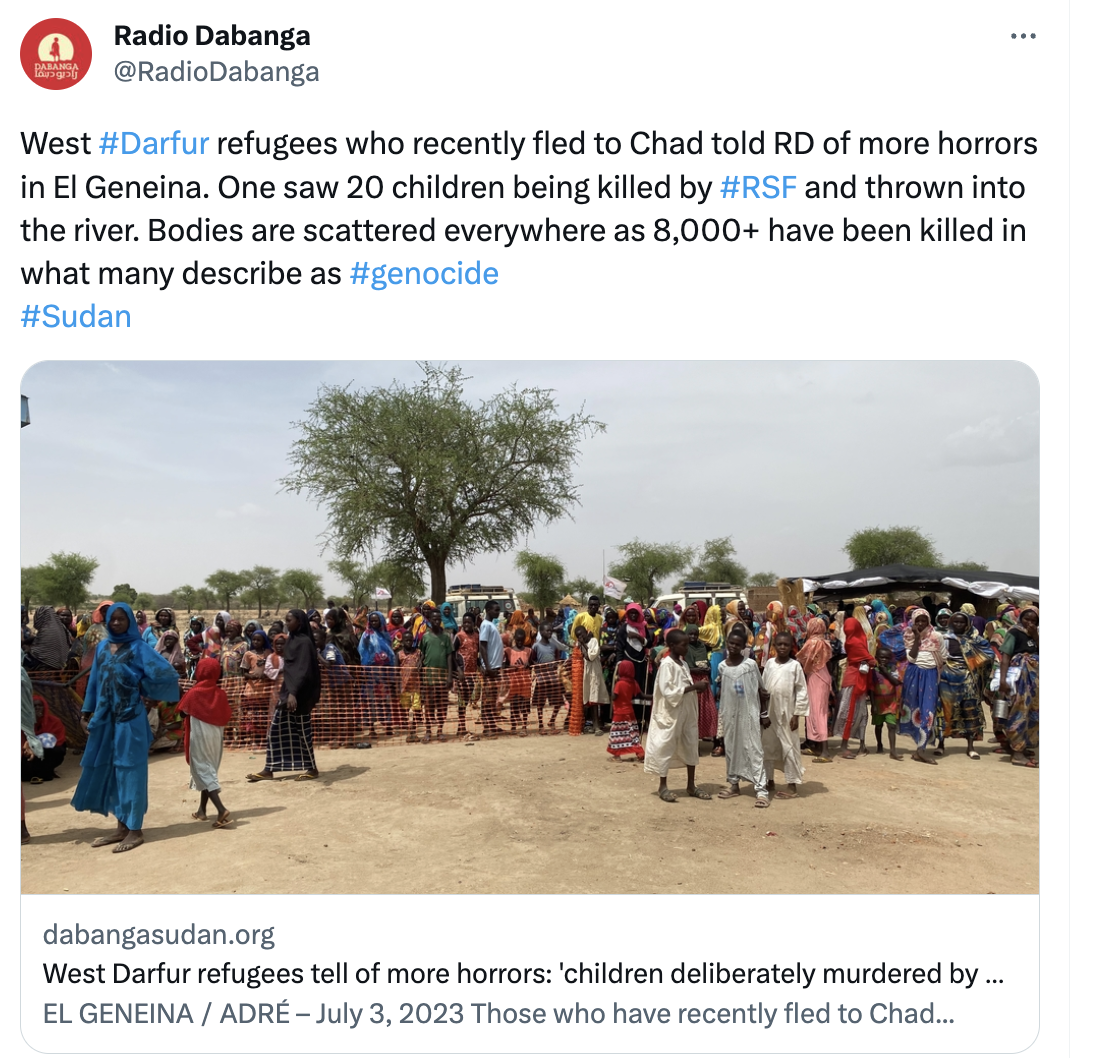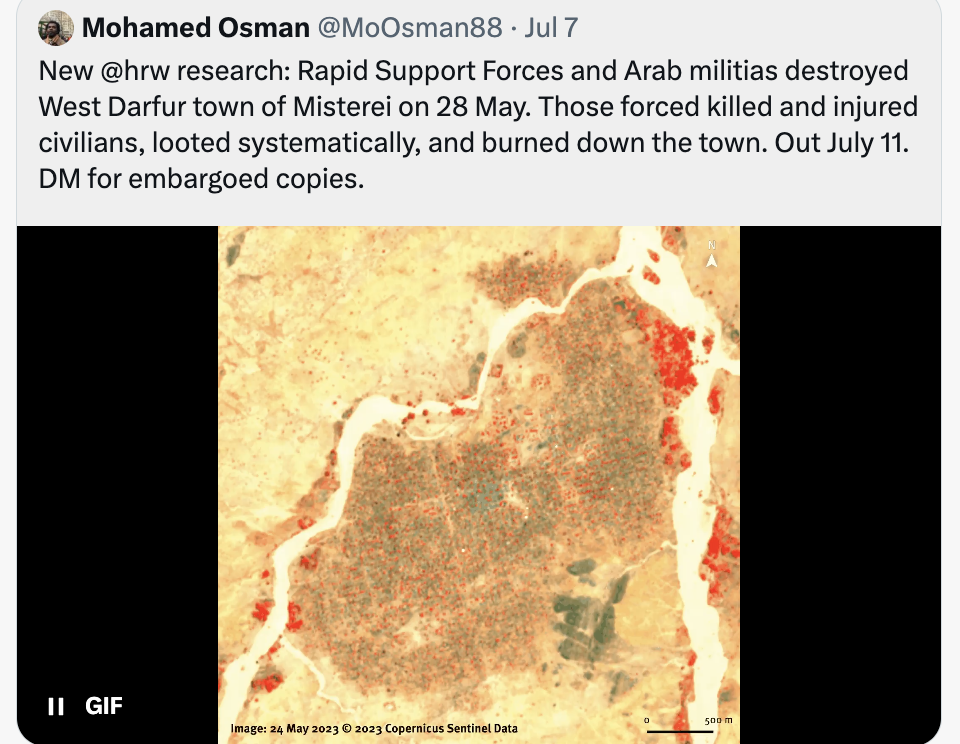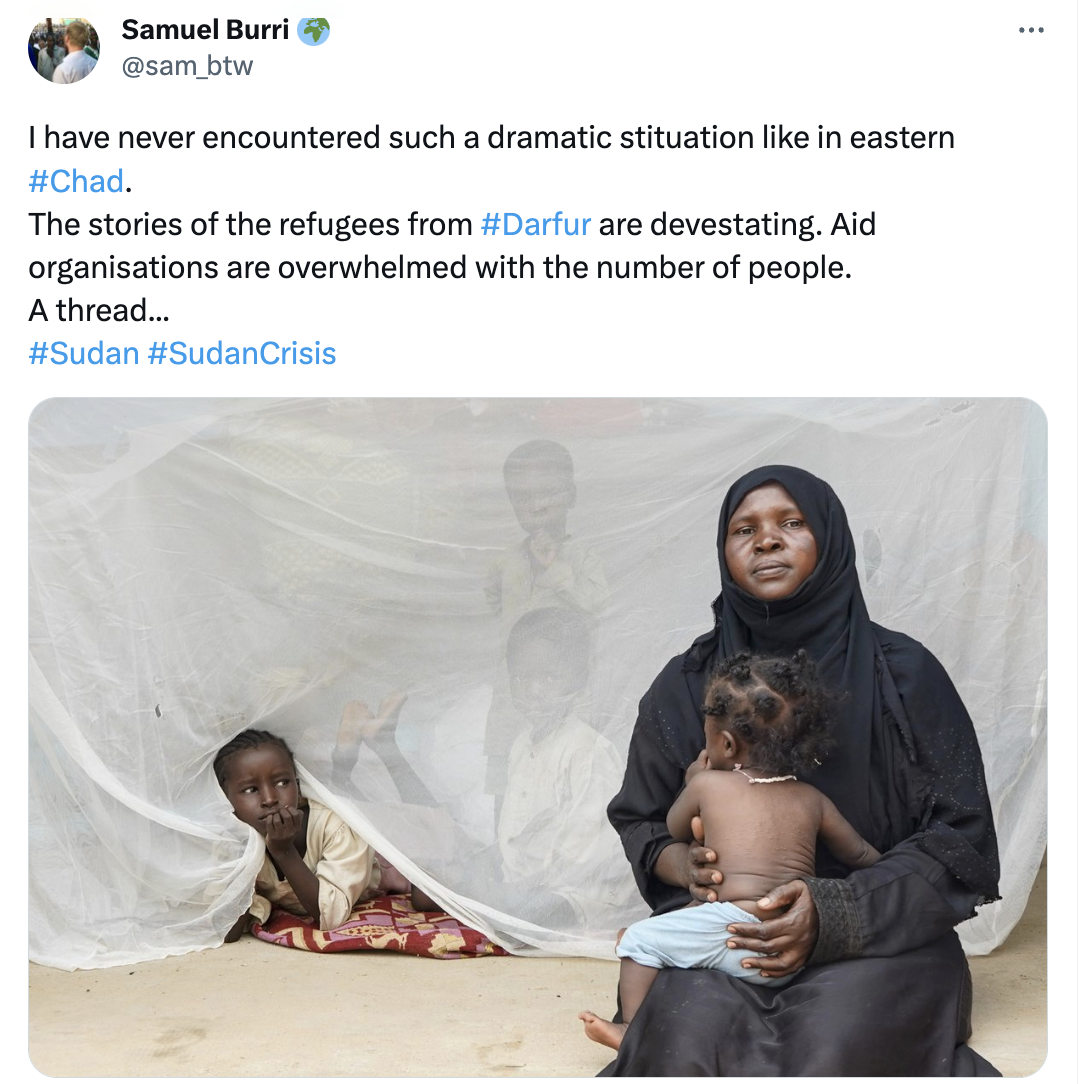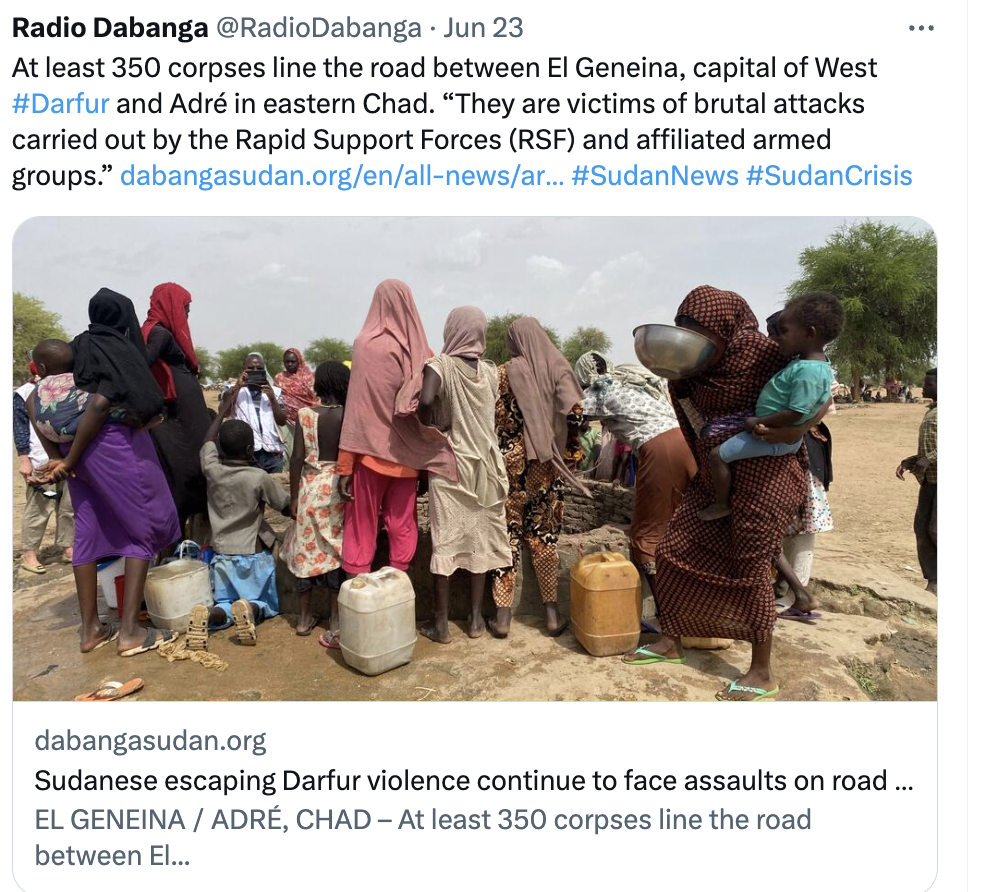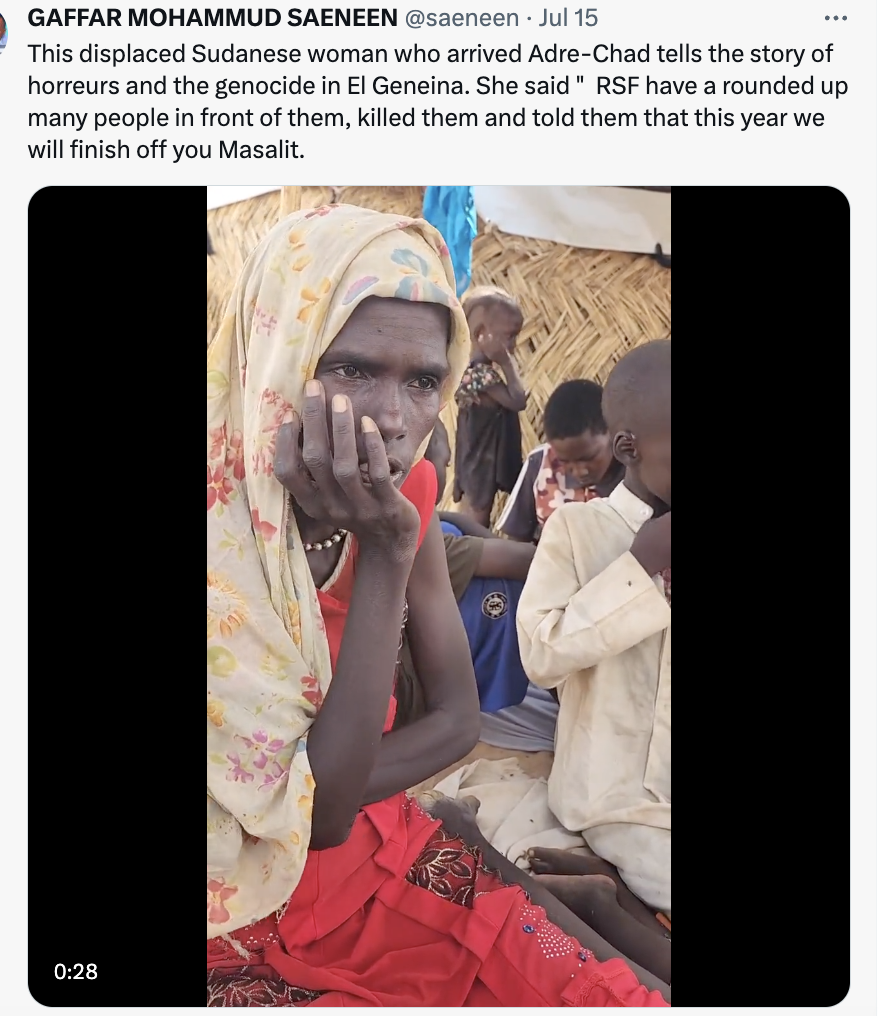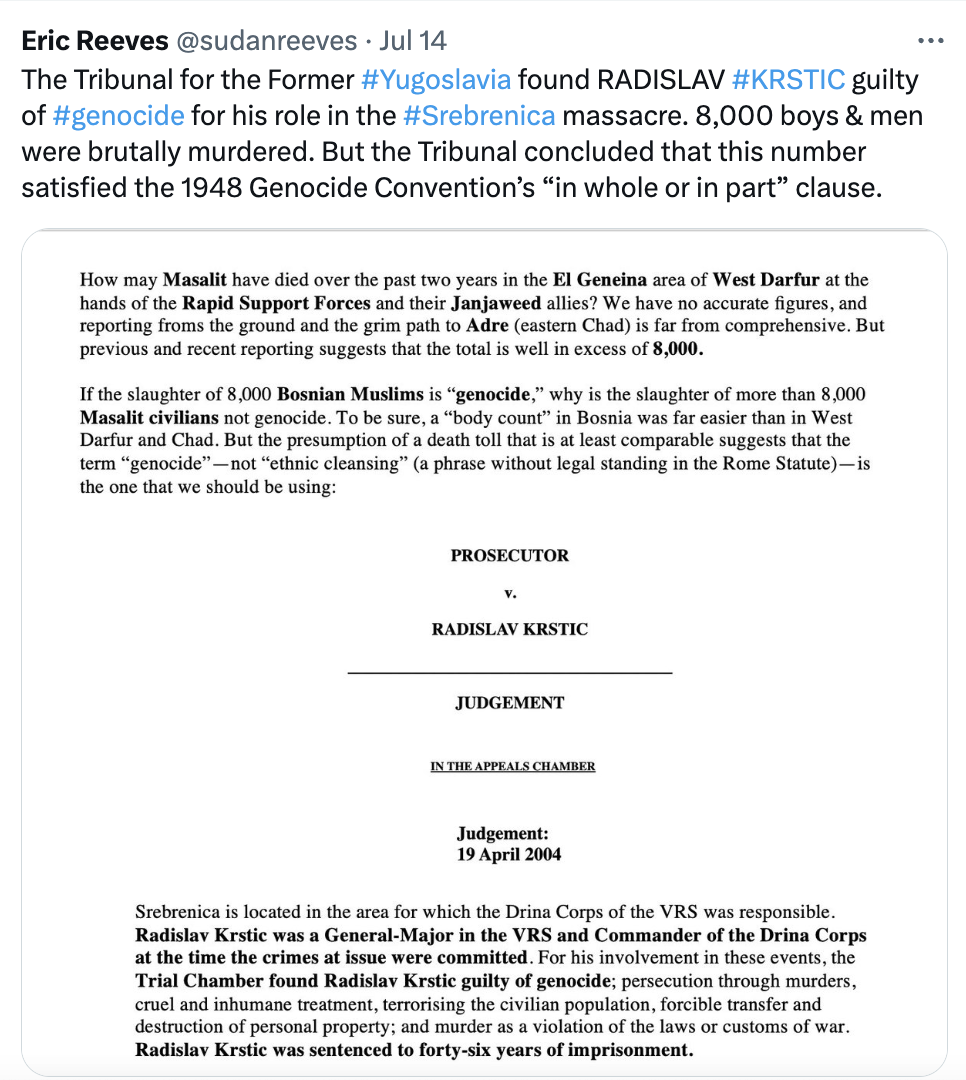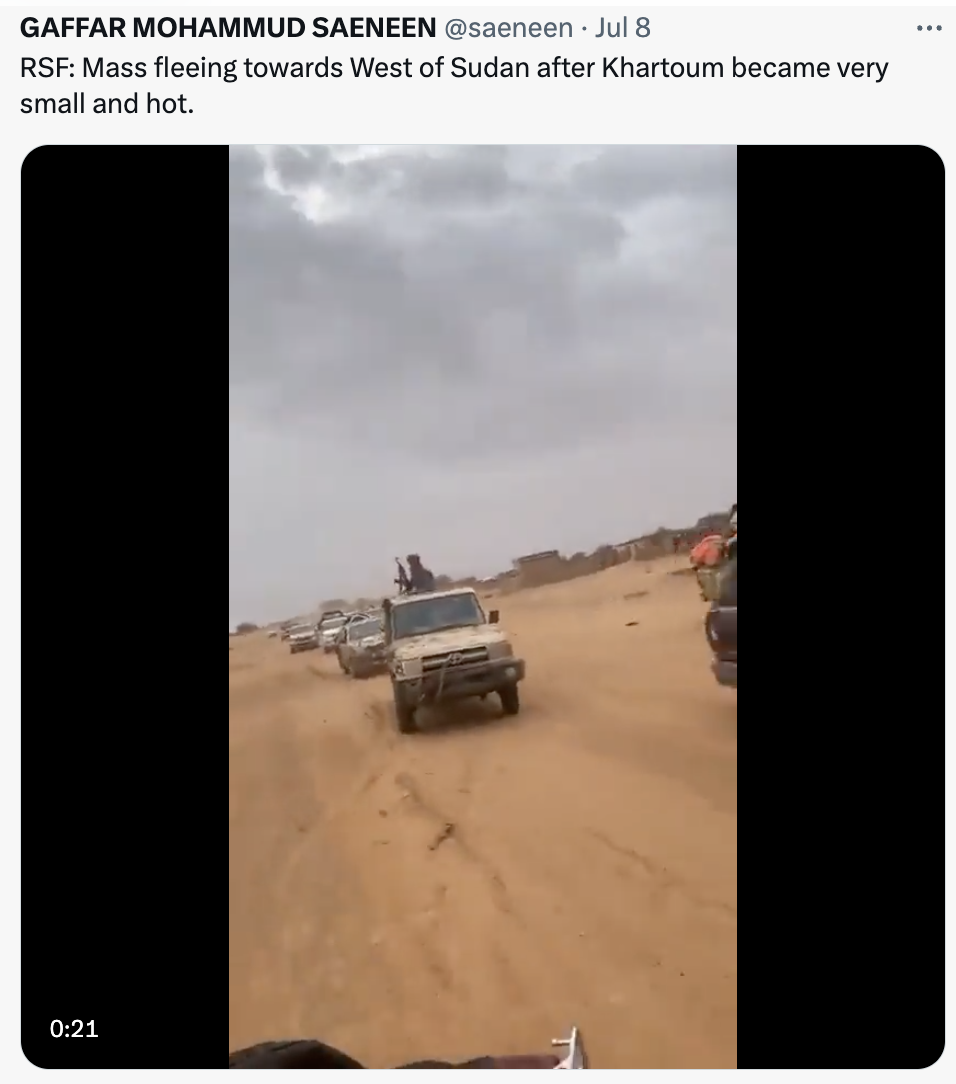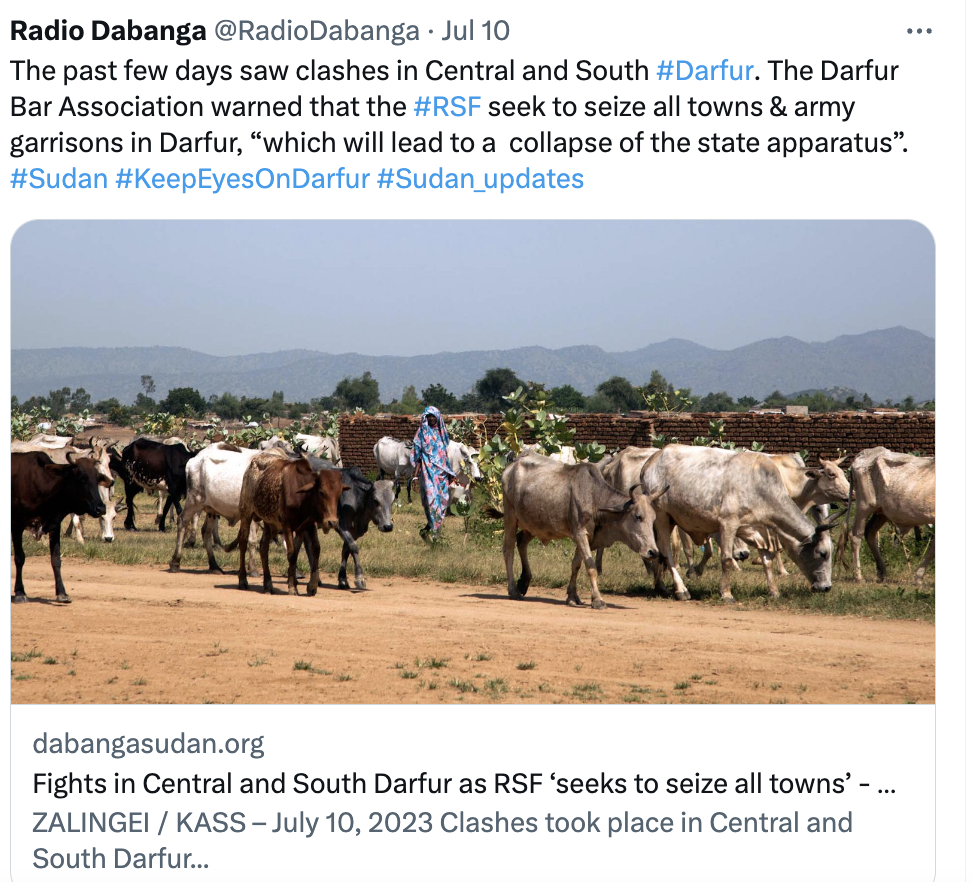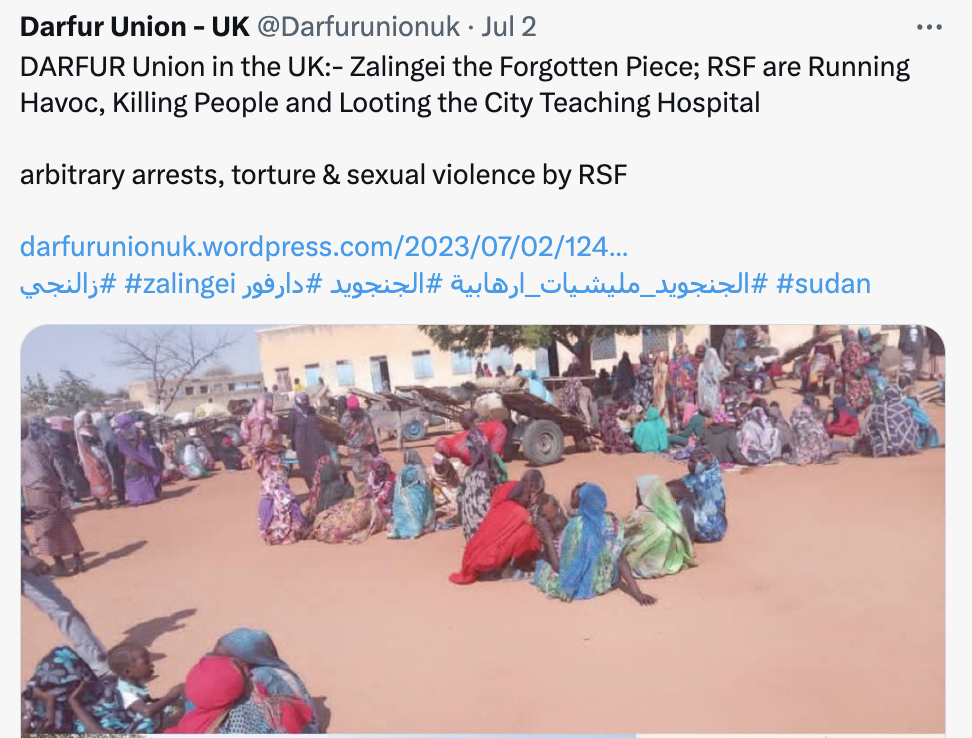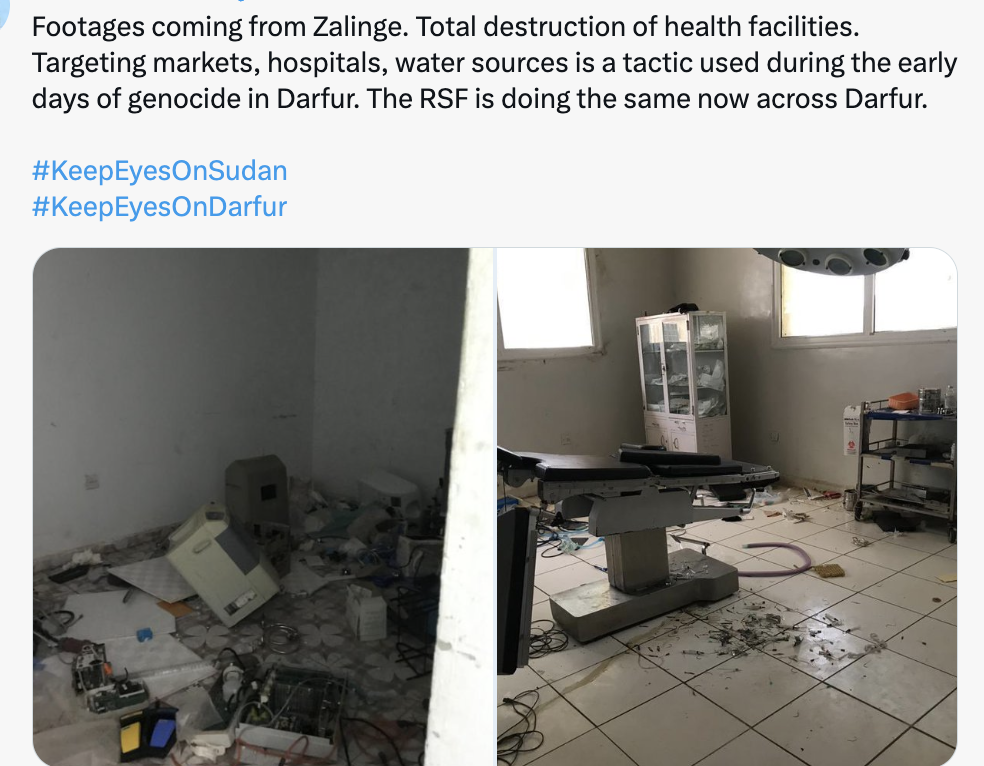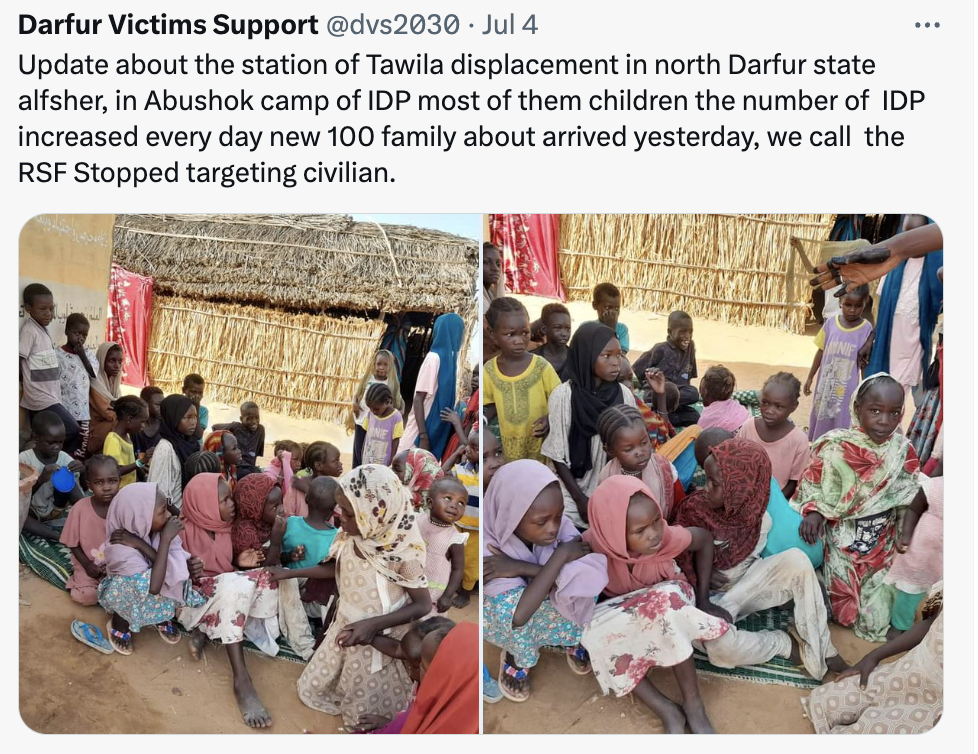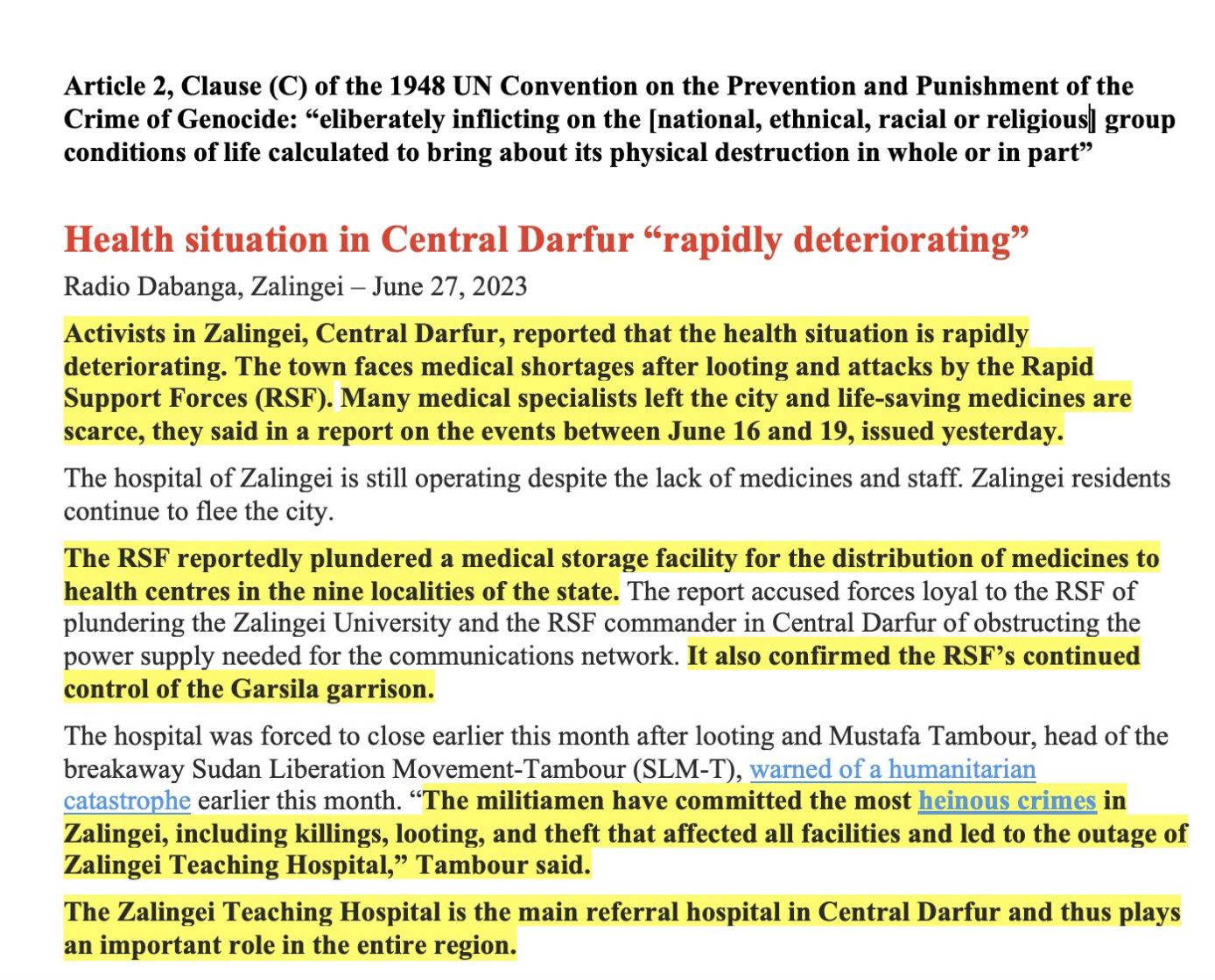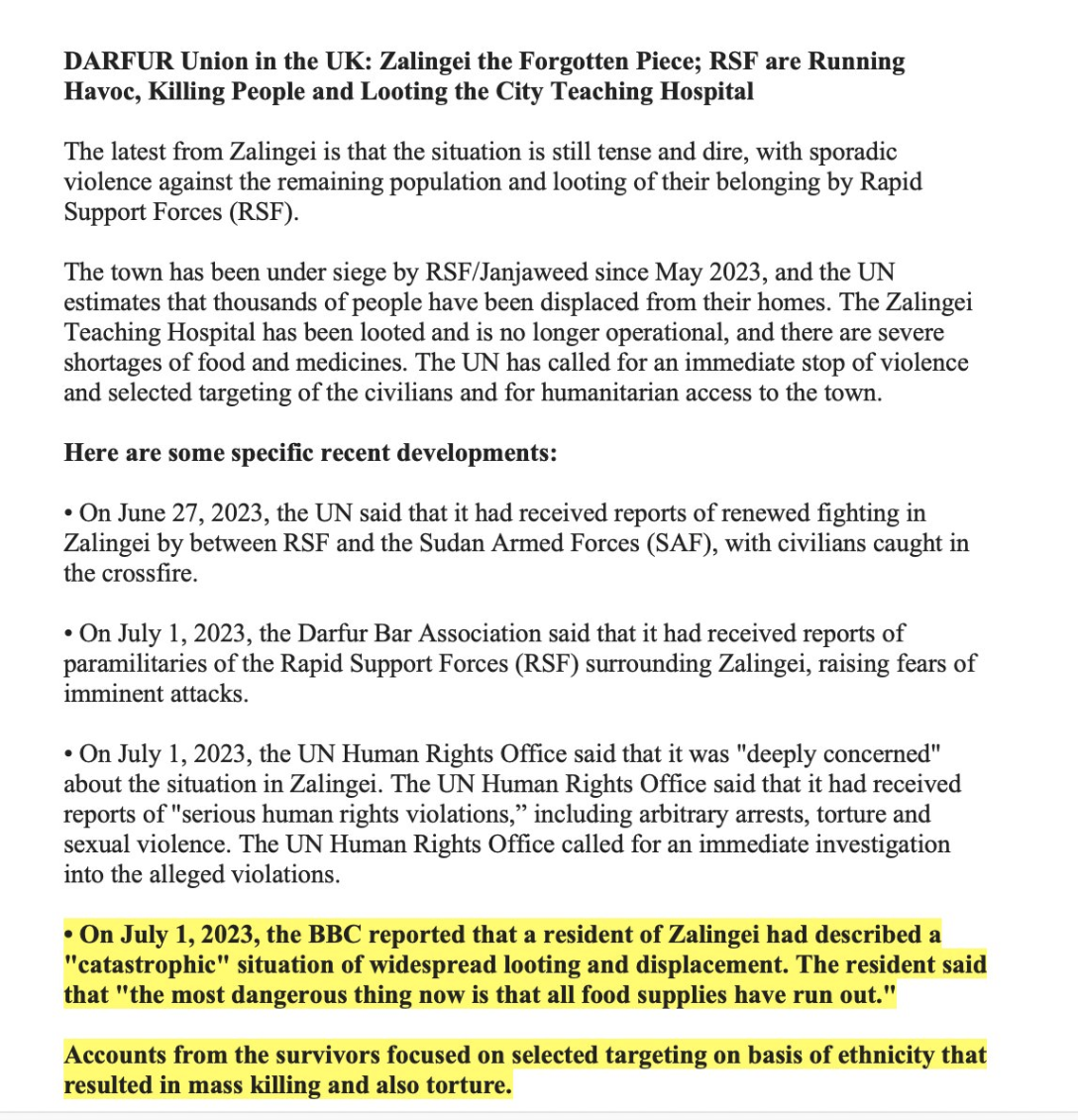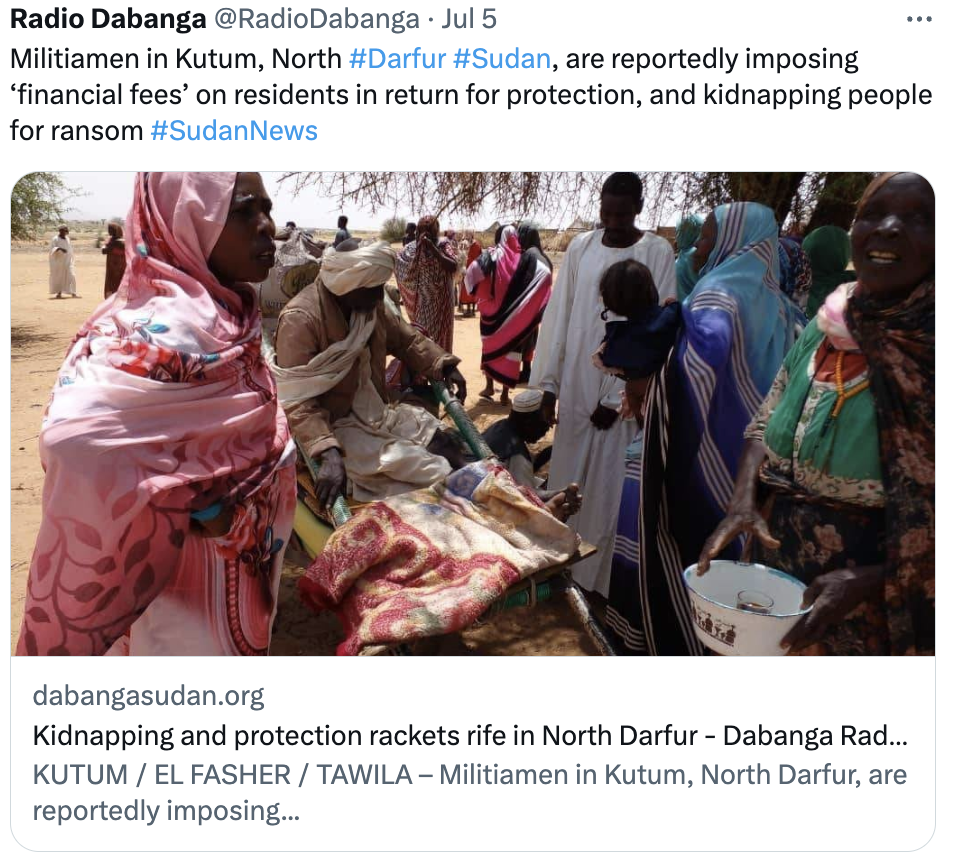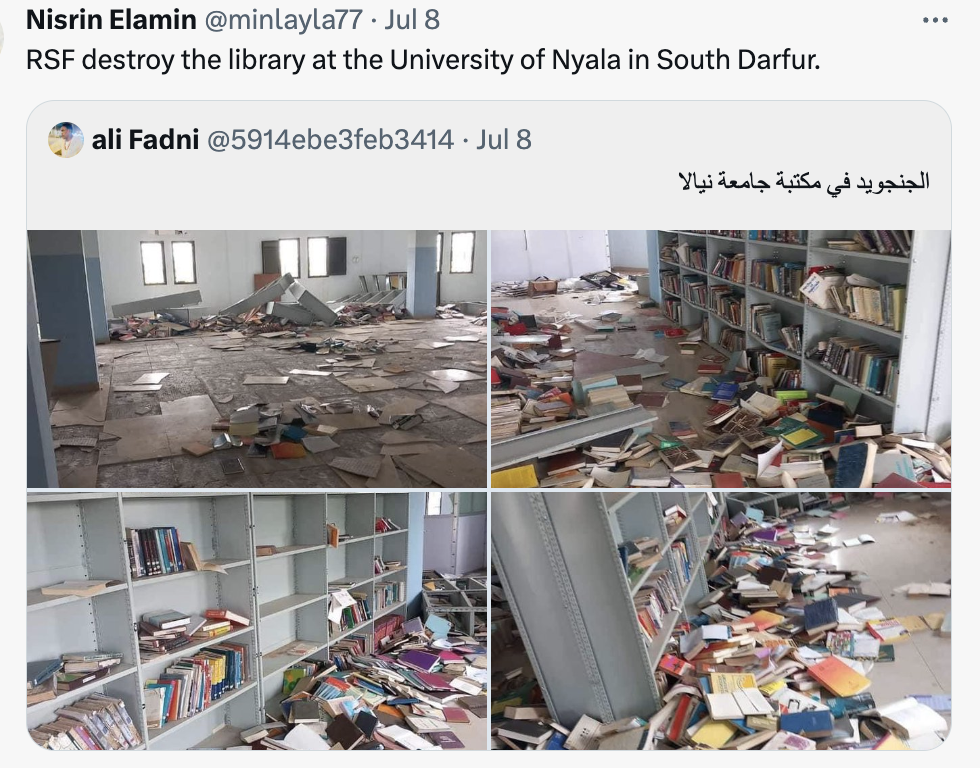ANNEX(a) to July 23, 2023 Update: Responding to Sexual Violence in Darfur
What will withdrawal of the Rapid Support Forces from Khartoum Augur for Darfur?
Eric Reeves, July 23, 2023
Conflicting reports and the pervasive fog of war make it difficult to know whether terms of Rapid Support Forces (RSF) withdrawal from Khartoum are making progress in Jeddah, Saudi Arabia. The military situation on the ground continues to reveal surprising strength and resilience on the part of the RSF, but unguided by any political or ideological principles, it is difficult to know what they would consider “victory.” The very large number of RSF vehicles reported leaving Khartoum and headed westward is likely the ultimate fate of all RSF forces, despite the craving for power by RSF commander Hemedti and his family/clan.
But if the RSF does retreat to Darfur the implications are ominous in the extreme, as examples below will suggest. As a “cultural development,” participation in the RSF on the part of these largely Mahariya tribesman from the Arab Rizeigat community (Hemedti and his family are from the Mahariya) has been catastrophic: it has taught these mainly younger men only cruelty, racism, and a willingness to take whatever they can steal or loot. But this culture of cruelty and racism now abides within them and largely defines their behavior.
[I will not attempt to distinguish between the RSF and the notorious “Janjaweed,” since there is no clear and defining differences between them in Darfur. The IDPs of Zamzam refer to both simply as Janjaweed. The savagery and barbarism we have seen over the past twenty years defines them both. Cameron Hudson, a senior associate at CSIS:
A month ago (June 23) I offered a brief overview of the RSF, its rise to power, and the predictability of its genocidal ambitions: “Understanding the RSF Amidst Current Violence in Sudan.”]
Daniel van Oudenaren, a seasoned journalist specializing in Sudan, notes in a Twitter post of July 10, summarizing a recent extensive and authoritative analysis in Al Jazeera by Jérôme Tubiana:
 Chadian Arab youths left and served a few years in the RSF in Sudan. They came back “much more racist,” according to Arab tribal elders in Chad. And this was before the war. From top to bottom RSF is rife with an Arabist racial ideology that they could export across the Sahel. [emphasis added—ER]
Chadian Arab youths left and served a few years in the RSF in Sudan. They came back “much more racist,” according to Arab tribal elders in Chad. And this was before the war. From top to bottom RSF is rife with an Arabist racial ideology that they could export across the Sahel. [emphasis added—ER]
The evidence of this is everywhere, in Khartoum, in the Kordofans, and in Darfur. Several grim anecdotes reported by Masalit refugees now in Chad (the Masalit are the predominant non-Arab ethnic group in West Darfur and particularly the El Geneina area) are illustrative of this RSF “culture of cruelty.” All Twitter postings below are from sources known to me (e.g., my project colleague Gaffar Mohammud Saeneen, as well as certain journalists)—or that I know to be authoritative (e.g., Radio Dabanga, Human Rights Watch; Darfur Union of the UK, Darfur Bar Association, of which I am a trustee), for its part, international news coverage of Darfur extends only to the eastern Chadian city of Adré, where Masalit refugees have gathered, and speak freely because they are safe from the RSF and Janjaweed.
Largely inured as I am to the cruelty of which the RSF are capable, I found the following, particularly the “game” of Ard Qam, utterly shocking: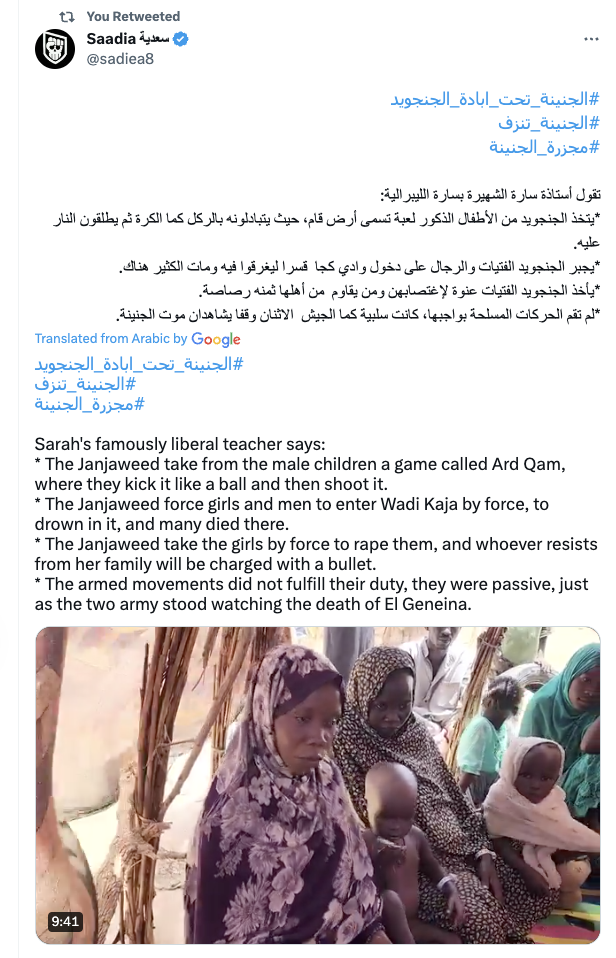
Such barbarism is not uncommon:
The full scale of the human destruction has yet to be determined. It is inconceivable that fewer than 10,000 Masalit in West Darfur have been killed by violence in El Geneina and elsewhere, including Mornei and the completely destroyed town of Masterei.
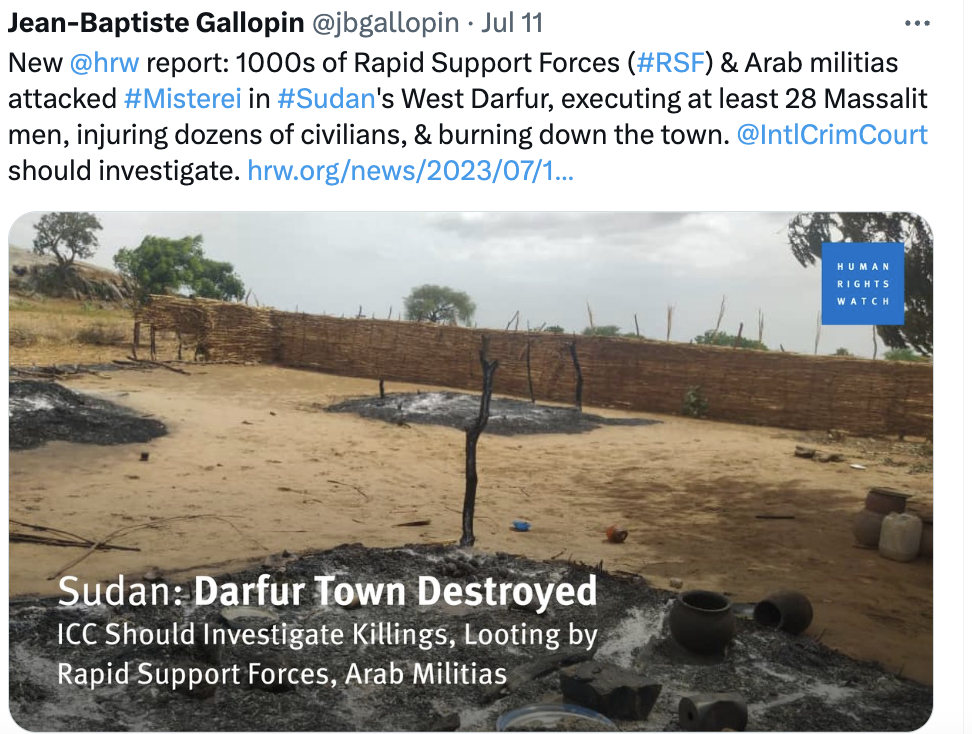
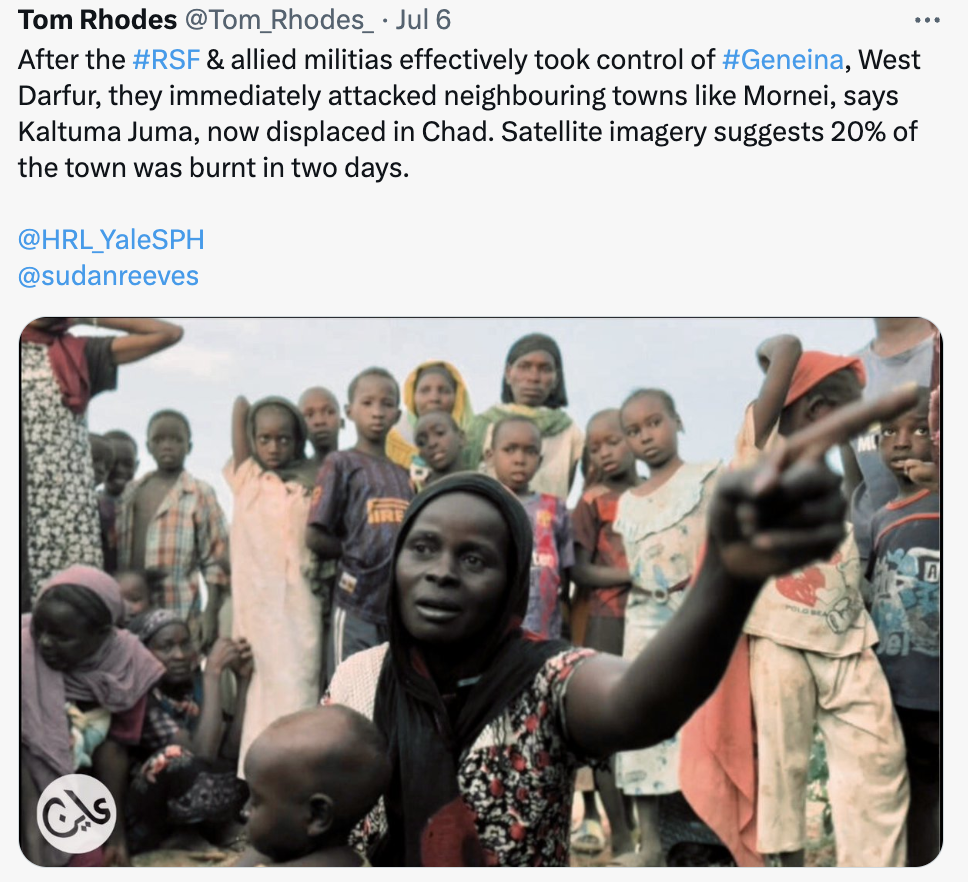 And just to make it to Chad and Adré is not enough. Humanitarian capacity cannot possibly accommodate the many tens of thousands fleeing the RSF/Janjaweed. Many will die from disease, hunger, and exposure (now is the height of the rainy season in Darfur). This from an experienced journalist, in Chad at the time of this dispatch:
And just to make it to Chad and Adré is not enough. Humanitarian capacity cannot possibly accommodate the many tens of thousands fleeing the RSF/Janjaweed. Many will die from disease, hunger, and exposure (now is the height of the rainy season in Darfur). This from an experienced journalist, in Chad at the time of this dispatch:
Genocide
The following Tweet from my colleague Gaffar is all too representative of the language used to articulate the genocidal ambitions of the RSF in Darfur:
The Economist asks the right question in this article:
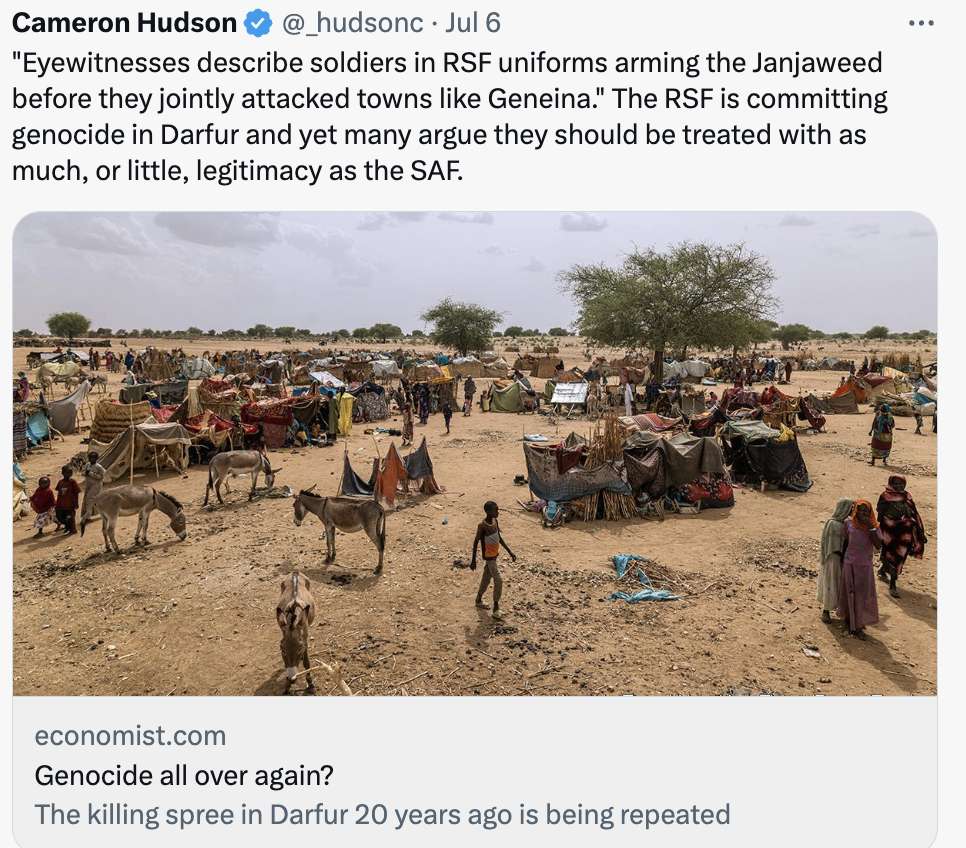 The assaults on predominantly Masalit towns of West Darfur continue apace, even as the larger ambitions of the RSF are all too clear. Again, the words of the paramount northern Janjaweed leader Musa Hilal in 2004: “Change the demography of Darfur. Empty it of African tribes.”
The assaults on predominantly Masalit towns of West Darfur continue apace, even as the larger ambitions of the RSF are all too clear. Again, the words of the paramount northern Janjaweed leader Musa Hilal in 2004: “Change the demography of Darfur. Empty it of African tribes.”
It is worth recalling that the Tribunal for the Former Yugoslavia ruled that in an April 2004 Judgment that Radislav Krstic was guilty of genocide for his role in the murder of 8,000 Bosnian Muslim men and boys at Srebrenica: this number, in the Tribunal’s judgment, satisfied the “in whole or in part” clause of the 1948 Convention on the Prevention and Punishment of the Crime of Genocide” (N.B. the word order here). The death toll among the Masalit of West Darfur already far exceeds this number.
The Fate of Greater Darfur
Elsewhere in Darfur, attacks by the RSF are increasing in number and destructiveness. And as more militiamen return from Khartoum, conditions will only deteriorate; human security and the meeting of humanitarian needs will shrink steadily.
And again, the issue of “genocide” is inescapable:
Many of those fleeing places like Tawila, Kutum and other towns in North Darfur will find their way to Zamzam; indeed, we estimate that some 50,000 newly displaced persons have arrived at the camp over the past few months. In Sudan as a whole, more than 3 million human beings have been forced from their homes since the fighting began on April 15. How will they be accommodated? Will the international community finally step up and provide security for humanitarian convoys making the long—and currently intolerably dangerous—trip from Port Sudan to Darfur and other marginalized regions of Darfur? Can famine be averted? Will genocide at the hands of the RSF and Janjaweed continue? There are few encouraging signs.
